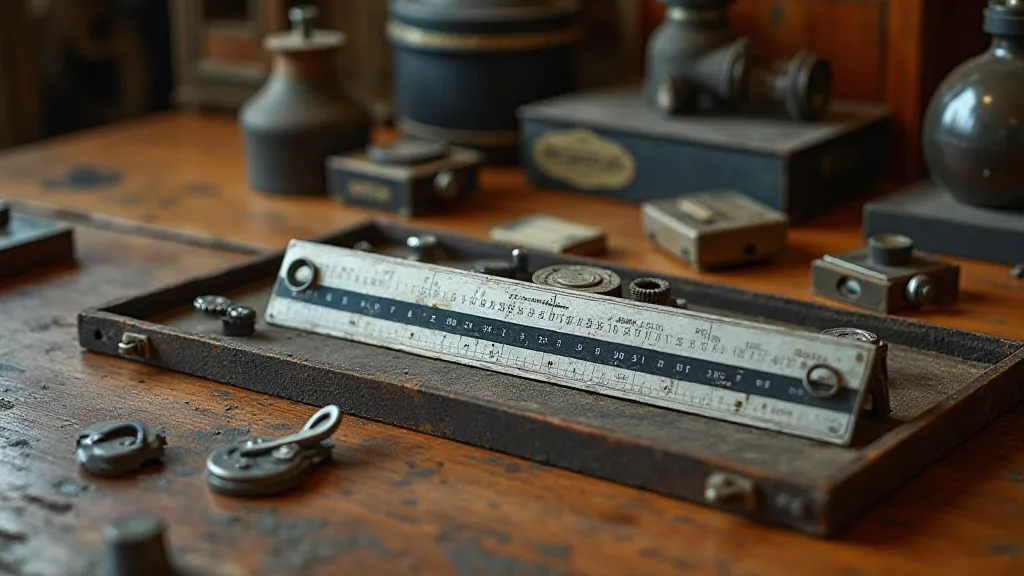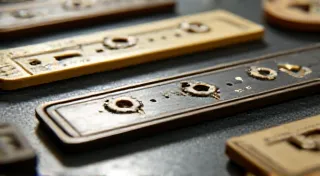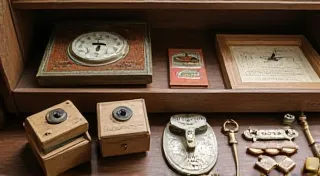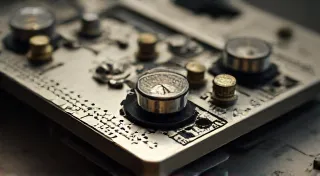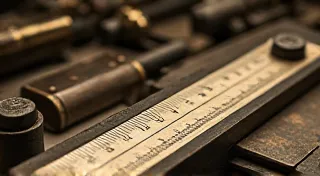Cleaning and Lubricating Your Vintage Slide Rule: A Step-by-Step Guide
Dust, grime, and old lubricants can significantly impact the smooth operation of a vintage slide rule. These fascinating tools, once indispensable for engineers and mathematicians, offer a unique connection to the history of calculation. This guide provides a comprehensive walkthrough of how to safely and effectively clean and lubricate your slide rule, ensuring accurate readings and preventing sticking. We cover the best cleaning agents to use (and those to avoid!), lubrication strategies for different slide rule mechanisms, and tips for preserving the original finish. Includes advice on identifying different types of slide rule construction and adapting cleaning methods accordingly. The history of slide rules and their impact on education is a compelling story - explore Slide Rules and Education: A Tool for Learning Mathematics for a deeper dive into their role in shaping mathematical understanding.
Understanding Your Slide Rule's Construction
Before you begin, it’s crucial to understand your slide rule's construction. Slide rules can be made from various materials, including plastic, bakelite, wood, and metal. Different construction methods – like dovetailed runners, sprung mechanisms, or direct friction – will influence the best cleaning and lubrication techniques. Some earlier rules have delicately painted scales that are particularly vulnerable to harsh chemicals. The precision involved in their creation is remarkable, and understanding the material composition is key to proper maintenance.
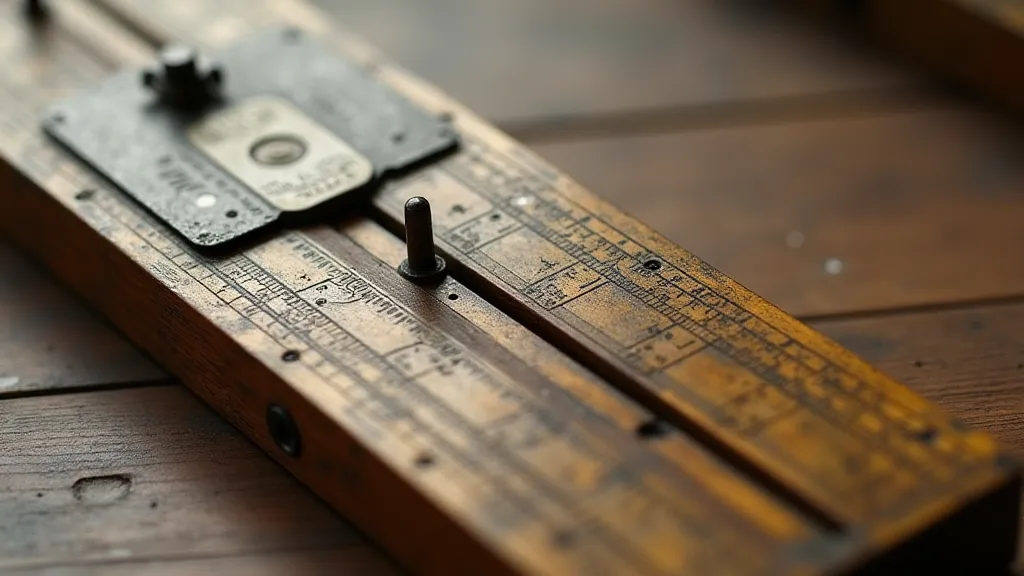
Gathering Your Supplies
You’ll need the following:
- Soft, lint-free cloths (microfiber is ideal)
- Cotton swabs
- Distilled water
- Mild dish soap (Dawn is often recommended – use sparingly!)
- Isopropyl alcohol (91% or higher – use sparingly!)
- Slide rule lubricant (more on this below)
- Small brushes (artist’s brushes or similar)
- Optional: Compressed air (canned air used for electronics)
Cleaning the Exterior
Start with the exterior. Gently wipe down the slide rule with a soft cloth dampened with distilled water. If grime is present, add a *very* small amount of mild dish soap to the water. Avoid getting water inside the moving parts. This gentle approach respects the delicate nature of older materials.
For stubborn dirt or residue, you can use isopropyl alcohol sparingly. Test a small, inconspicuous area first to ensure it doesn’t damage the finish. Immediately wipe away any excess alcohol with a clean cloth. Never soak the slide rule. Be particularly mindful of painted scales and ornate detailing which are susceptible to damage from solvents.
Cleaning the Runners and Scales
This is the most delicate part. Use a slightly dampened cloth and cotton swabs to carefully clean the runners and scales. Compressed air can be helpful for removing loose debris. Avoid excessive rubbing, which can damage the scales. Don’t try to remove slight scratches or wear—they’re part of the slide rule’s history. Many collectors value the patina of age, a testament to the tool’s previous life.
Lubrication: The Key to Smooth Operation
Once the slide rule is clean and dry, it’s time to lubricate. The goal is to reduce friction and ensure smooth movement. Over-lubrication is as bad as under-lubrication, as excess lubricant attracts dust and grime.
Choosing the Right Lubricant: The best lubricants for slide rules are typically thin, non-drying oils. Examples include:
- Slide Rule Lubricant: This is often a specialized blend designed specifically for this purpose.
- Sewing Machine Oil: A lightweight, non-detergent oil.
- Clock Oil: Very thin and suitable for delicate mechanisms.
Proper lubrication is essential not only for functionality but also for preserving the tool’s longevity. For those interested in displaying their vintage tools, a well-maintained slide rule adds to the aesthetic appeal – explore Creating a Slide Rule Display: Showcasing Your Vintage Tools for ideas on presentation and preservation.
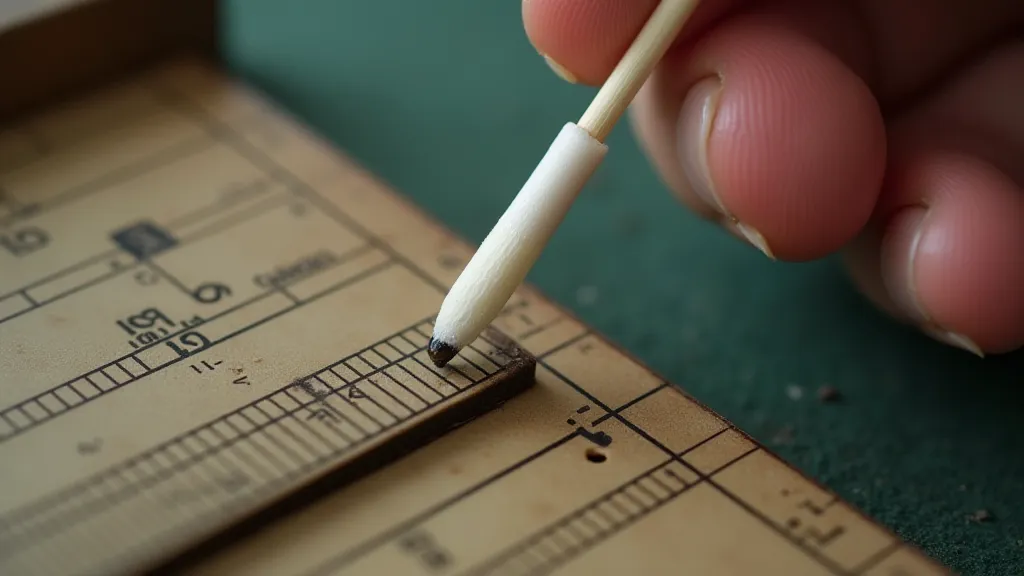
Special Considerations
Plastic Slide Rules: Be extra cautious with solvents on plastic. Test in an inconspicuous area first. Some plastics can be degraded by alcohol.
Wooden Slide Rules: Wood can absorb moisture. Avoid excessive water exposure. Maintaining wooden slide rules requires careful attention to humidity levels to prevent warping and cracking – learn more at Maintaining Wooden Slide Rules: Preventing Warping and Cracking.
Delicately Painted Scales: If your slide rule has finely painted scales, use only distilled water for cleaning. Avoid solvents entirely. The artistry of these scales is often remarkable, showcasing detailed designs and precise markings.
Beyond Cleaning: Understanding the Mathematics
While cleaning and lubricating your vintage slide rule is essential for its physical preservation, it's also a fantastic opportunity to appreciate the underlying mathematics. Slide rules embody logarithmic principles, a fascinating area of study that was once central to scientific and engineering education. Understanding how these tools function allows for a deeper connection to their historical significance.
Common Problems and Troubleshooting
Even with careful cleaning and lubrication, you may encounter occasional issues. Here are a few common problems and potential solutions:
- Sticking Runners: Often caused by a buildup of old lubricant. Thorough cleaning and relubrication are typically effective.
- Difficulty Reading Scales: Could be due to grime or damage to the scales. Gentle cleaning may improve visibility.
- Loose Parts: Vintage slide rules may have loose parts due to wear and tear. Careful inspection and, if you’re comfortable, minor repairs may be necessary. Consider consulting a vintage tool specialist for assistance.
Final Inspection and Storage
After cleaning and lubricating, slide the rule back and forth several times to ensure smooth operation. Store your vintage slide rule in a clean, dry place, preferably in a protective case. Avoid extreme temperatures and humidity. Protecting your investment is key to ensuring it remains a functional and beautiful piece of history.
